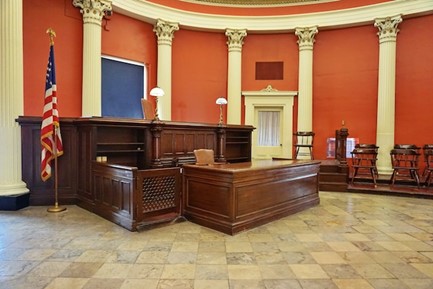Courtroom trials can be dramatic, captivating, complex — and confusing.
Trials can take just a day’s time or drag on for months. There are so many players to keep track of that it’s easy to get lost in the who’s who of a trial. Sometimes there’s a jury and a judge. Sometimes there’s neither.
But with a skyrocketing interest in true crime and more trials being televised, many are attempting to keep up with legal proceedings. Tricia A. Bigelow provides a cheat sheet below of who’s who.
The Basics
A trial is any type of civil or criminal proceeding that includes evidence examination and concludes with a verdict. Typically, trials are overseen by a judge and a jury and can result in either financial penalties or jail time in state or federal prisons.
Civil cases, and some criminal misdemeanors, are sometimes tried without a jury — that often depends on the state where the trial is being held and if a defendant (the accused) waives their constitutional right to a jury trial. A plaintiff (the accuser) may also have to agree to a trial with or without a jury.
Much may take place before a trial officially begins. Defendants often make first appearances in court where they officially told the charges against them, asked if they understand the charges, and also asked if they understand their rights, such as the right to have an attorney.
Whether a jury is involved in a trial or not, trial proceedings are carried out in essentially the same way. If a jury is involved there is a period before the trial called voir dire, when members of the jury are selected after formal questioning and approval by both the plaintiff and defendant sides.
When a jury is fully selected, or impaneled, then the trial commences.

Timeline
A trial usually begins with both sides making their opening statements. Lawyers representing both the plaintiff and defendant will take turns addressing the jury and outlining the case elements.
It is usually a summation of what the jury can expect to see and hear during the trial. Plaintiffs will lay out the essential reasons why the defendant is guilty, while lawyers on the defendant’s side will give the key reason why they are not responsible for the crime they are accused of committing.
From there, the order of trial events includes the formal presentation of evidence. This may include physical objects (a murder weapon, photos of the crime scene) or convey via testimony from witnesses called by either side. All evidence and testimonies must follow the ruling of the judge who determines whether a piece of evidence is admissible or not.
A judge will likely make numerous rulings during the course of a trial. In addition to acceptable evidence, judges must field objections from either side if they feel like one side is asking unlawful questions or if they feel they did not have adequate time to evaluate evidence or were informed of potential witnesses.
When a judge deems an objection “sustained,” they agree with the objection. If an objection is overruled, they disagree, and the line of questioning or evidence presentation continues.
Wrapping Up
When both sides have presented their cases to their satisfaction, a judge formally sends the case to the jury for deliberation. This is when a jury weighs all of the charges and decides whether to find a defendant guilty or not on each. In the U.S., jurors essentially determine if a case is proven beyond a reasonable doubt.
They may ask to review pieces of evidence again or read transcripts from parts of the trial. Juries may take hours or days to render verdicts. If they cannot unanimously agree on a verdict over a certain amount of time, a judge may make them try again or declare a mistrial.
If a jury is not involved, it is up to the judge to render a verdict as well as the associated punishment. If a defendant is found not guilty, they are usually released right away.
If they are found guilty, they typically return to jail and await the formal penalty phase of a trial, when a judge and jury decide either monetary punishment or the length and nature of jail time.

